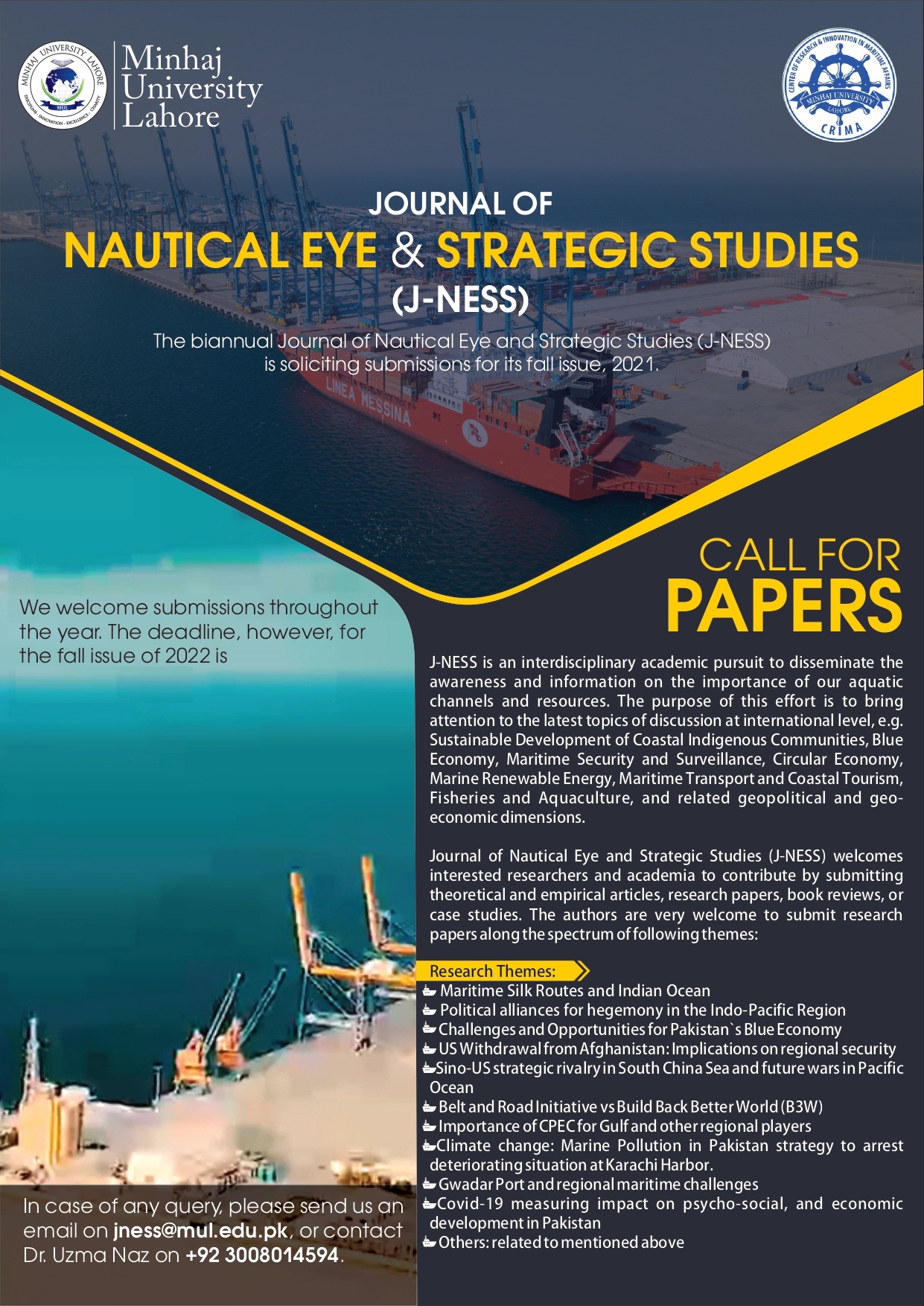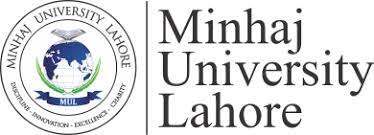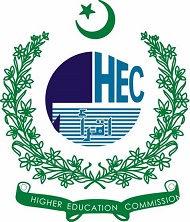The Impact of Physical and Human Capital Spending on Labour Productivity in Nigeria Maritime Sector (1985 – 2022)
DOI:
https://doi.org/10.58932/MULG0024Keywords:
Government Expenditure, Gross Domestic Product, Human and Physical Capital, Labour productivity, Ordinary Least Squares, Per Capita IncomeAbstract
It is evidenced from the available data that labour productivity in Nigeria Maritime Sector has generally recorded an abysmally low rate over the years. In addition to this, it is also revealed that much has not been invested by government on human capital and physical infrastructures in the country over the same period. In recent years, the Nigerian government increased her expenditure on education, health care services and infrastructures such as road constructions and within the same period, there was a marginal increase in labour productivity in Nigeria Maritime Sector. This research study uses Ordinary Least Squares (OLS) method to provide an econometric assessment of the subject matter. This study does so by ascertaining the relationship between these two forms of government spending and labour productivity and analyzing their impact on other macroeconomic variables such as Gross Domestic Product (GDP) and per capita income. Overall findings reveal that in the long run, human and physical capital spending is an important determinant of labour productivity, which will in turn, impact positively on the performance of Nigerian economy. While increase in government total expenditure on education not backed up by corresponding investment in real capital project and power sector development will impact its labour productivity negatively with its attendant effect on the economy.
References
Adelowokan, O.A. (2012). Growth effect of Education and Health Expenditure in Nigeria : African Journal of Scientific Research Vol. 10, No. 1. ISSN 2220-9433.
Appleton, S. & Teal, F. (1998). Human Capital and Economic Development. A Background Paper Prepared for the African Development Report.
Aschauer, D. A. (1989), “Is Public Expenditure Productive?”.Journal of Monetary Economics, 23, 177-200.
Adamu, G. M. (2003) “The impact of human capital formation on economic development in nigeria: An error correction approach” Nigerian Economic Society (NES) Part two pg 53-77.
Arabi, K. & Abdalla, S. (2013). The impact of human capital on economic growth: Empirical evidence from Sudan. Research in World Economy,4(2):43-53.
Barro R J & X Sala-i-Martin (1995) Economic Growth. McGraw-Hill New York.
Becker, Gary S., (1964) Human capital: A theoretical and empirical analysis, with special reference to Education. University of Illinois at Urbana-Champaign's Academy for Entrepreneurial Leadership Historical Research Reference in Entrepreneurship, Available at SSRN: https://ssrn.com/abstract=1496221
Barro, R.J. and X. Sala-i-Martin (2004). Economic Growth. 2nd Edition, Cambridge, Massachusetts, London, England: The MIT Press.
Boopen, S. (2006) Transport Infrastructure and Economic growth: Evidence from Africa using dynamic panel estimates. The empirical economics letters, 5(1), 37 – 52. Central Bank of Nigeria (2014).CBN Statistical bulletin, 2014.
Dae-Bong, K. (2009) “Human capital and its Measurement: The 3rd OECD World Forum on Statistics, Knowledge and Policy” Charting Progress, Building Visions, Improving Life.Busan, Korea.
Delong and Olney (2006) Macroeconomics; McGraw-Hill international, 2nded.
Dickey, D.A, and Fuller, W.A. (1981). Likelihood Ratio Statistic for Autoregressive Time Series with a Unit Root. Econometrica, 49, 1057-1072.
Engle, R.F and Granger C.W.J. (1987). Co-integration and Error Correction Representations, Estimation and Testing, Econometric, March, (25), 1-76.
Frank, R. H., & Bernanke, B. S. (2007). Principles of Microeconomics (3rded.). New York: McGraw-Hill/Irwin.
Griffin, K. and J.B. Knight (1990) “Human Development and the International Development Strategy for the 1990s”Macmillan: Basingstoke.
Hall, Robert E., and Jones, Charles I. (1999). “Why Do Some Countries Produce So Much More Output per Worker than others?” Quarterly of Economics 114: 83-116.
Johansen, S. and K. Juselius (1990), “Maximum Likelihood Estimation and Inference on Cointegration with Applications to the Demand for Money,” Oxford Bulletin of Economics.
Jorgenson, D. W; Ho, M. S and Stiroh, K. J. (2007). A Retrospective Look at the U.S. Productivity Growth Resurgence. Federal Reserve Bank of New York Staff Reports, no. 277 February 2007 JEL classification: O3, O4
Klenow, Peter J., and Rodriguez-Clare, Andres (1997) “The Neo-classical Revival in Growth Economics: Has it Gone Too Far?” NBER Macroeconomics Annual 12: 73-103.
Lindsay C. (2004). Labour productivity. U.K Office for National Statistics • Labour Market Trends •November2004.
Madden, G. and Savage, S.J. (1998). ‘Sources of Australian Labour Productivity Change 1950-94’, Economic Record, vol. 74, pp. 362-83.
Mankiw, G., D. Romer and D. Weil (1992). "A Contribution to the Empirics of Economic Growth."Quartely Journal of Economics, pp. 407-37.
Mba, R.N and Ekeopara C. (2012). Brain Drain: Implication for Economic Growth in Nigeria. American Journal of Social Issues and Humanities. Vol 2, No2.
OECD (2001). Measuring Productivity. Organisation for Economic Co-operation and Development. OECD Publications, 2, rue André-Pascal,75775 Paris Cedex 16,France.
National Bureau of Statistics (2017). Labour Productivity Report. March, 2017.
Onabe B. J.,Eneji M. A., and Juliana D. V. (2013). Health care expenditure, health status and national productivity in Nigeria (1999-2012). Journal of Economics and International Finance. Vol 5(7), pp.258-272.
Obialor, M.C., (2017), Effect of government human capital investment on economic growth in Sub-Saharan Africa: Evidence from Nigeria, South Africa and Ghana (1980-2013), International Journal of Asian Social Science, 7, (4), 328-339
Oboh, J.S, Rahmah I, & Abu, H.S, (2010), The impact of human capital development on the economic growth of Nigeria. Prosiding Pekem V, Jilid I. Port Dickson, Negeri Sembutan: Persidangan Kebangsaan Ekonomi Malaysia ke V (PERKEM V). pp: 63-73.
Ogujiuba K & Adeniyi, A. (2005) Economic growth and human capital development in Nigeria.
Ogunleye, O. O., Owolabi, O. A., Sanyaolu, O.A., & Lawal, O. O. (2017). Human capital development and economic growth in Nigeria. IJRDO-Journal of Business Management, 3(8), 1-22.
Okojie, E. I. (2003) Education and health in Nigerian economy: Structure, growth and development. A Research working report submitted to the Department of Economics, ABU.
Phillips, P.C.B, and Perron, P. (1988), Testing for a Unit Root in time Series Regression. Biometrika, 75, 335-346.
Romer, P. (1990), Human Capital and Growth: Theory and Evidence, Carnegie-Rochester Conference Ser. Public Policy, 32(0):251–86.
Romer David (2012) Advanced Macroeconomics. McGraw-Hill Irwin, 4th ed. ISBN 978-0-07-351137-5
Solow R. M (1957). Technical change and the aggregate production. Review of Economics and statistics, August
Tinbergen, Jan. (1942). ZurTheorie der LangfristigenWirtschaftsentwicklung .WeltwirtschaftlichesArchiv 5 5, no. l : 51 1-49. 1959. Selected Papers. Amsterdam:North-Holland.
Todaro, M.P. and Smith, S.C. (2009). Economic Development, 9th Ed., Pearson Education (Singapore) Pty. Ltd., Delhi, India.
Umoru D. and Yaqub J. O. (2013). Labour Productivity and Health Capital in Nigeria: The Empirical Evidence. International Journal of Humanities and Social Science. Vol. 3No. 4.
Valadkhani Abbas (2003). An Empirical Analysis of Australian Labour Productivity. Australian Economics Papers, 42(3), 2003, 273-291.
Weil, N. (2009). Economic growth. 2nd edition, Prentice Hall publishing, New Jersey, USA.
World Bank (2017), World Fact Book, UN Transparency International. Washington DC., World Development Indicator (2017).
World Economic Forum (2017). The Human Capital Report 2017. ISBN 92-95044-49-5.
Downloads
Published
How to Cite
Issue
Section
License
Copyright (c) 2023 Journal of Nautical Eye and Strategic Studies

This work is licensed under a Creative Commons Attribution-NonCommercial 4.0 International License.










